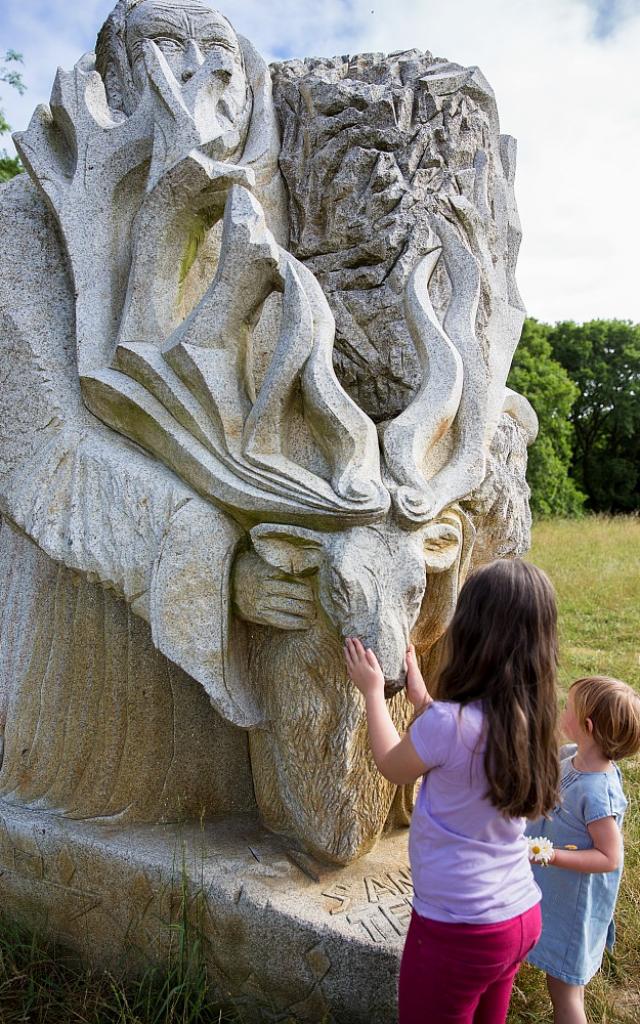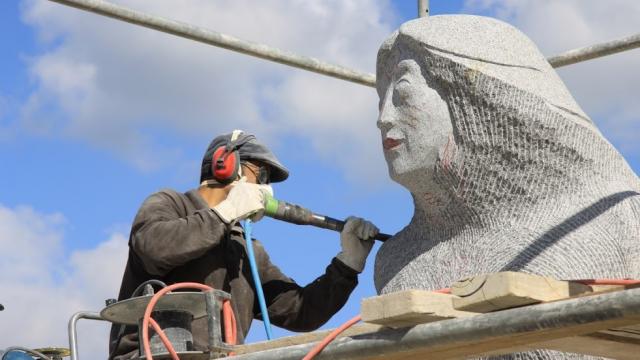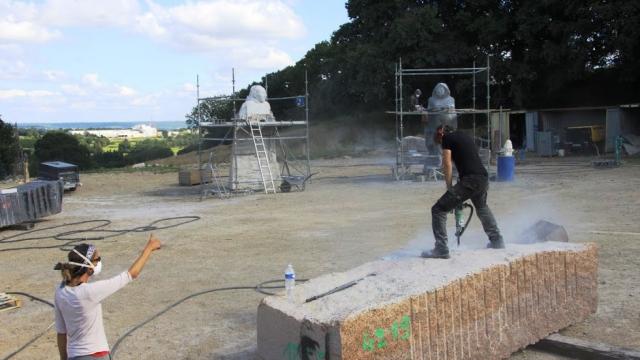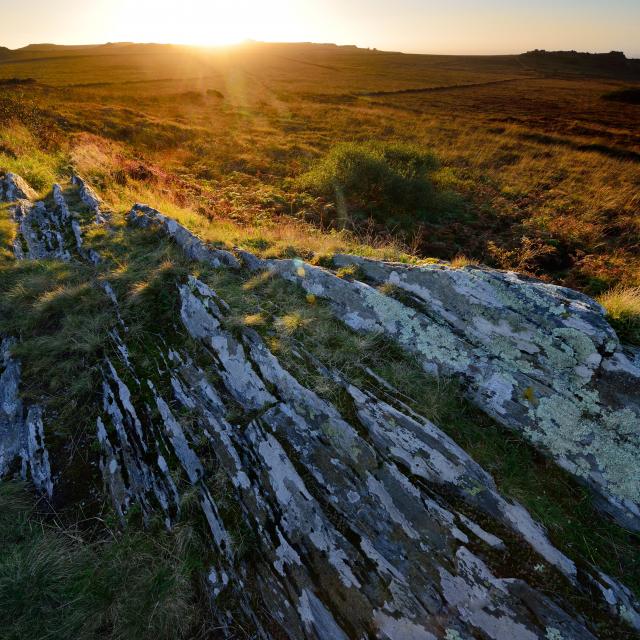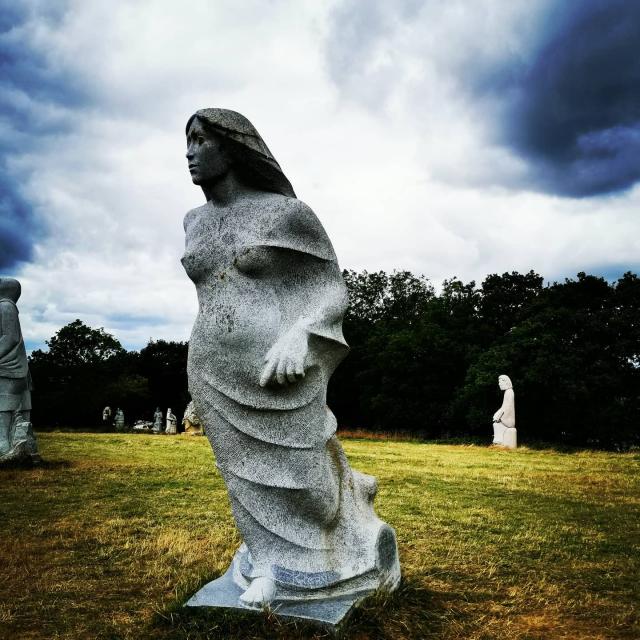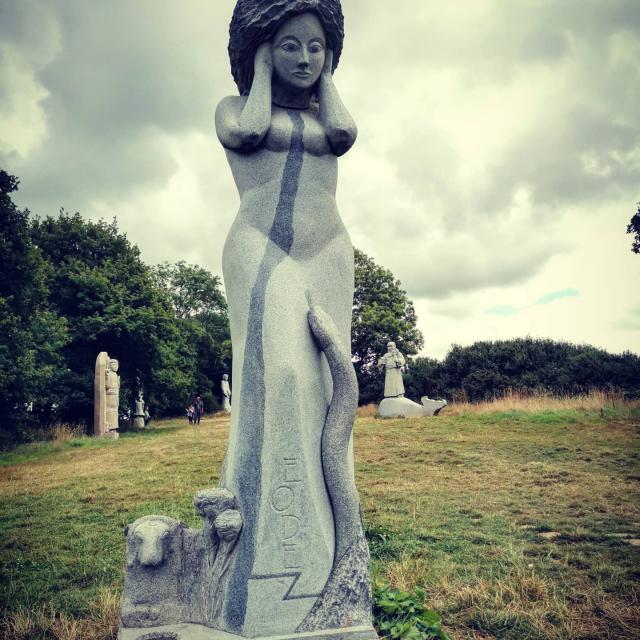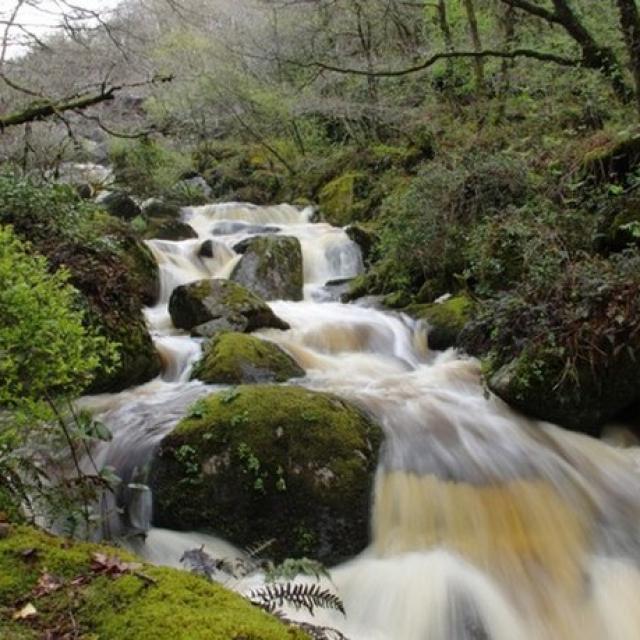A breathtaking site just a stone’s throw from Carhaix
Just 15 km from Carhaix lies one of the most spectacular sites in Brittany. In Carnoët, halfway between Carhaix and Callac, the Valley of the Saints was built around a promontory offering breathtaking views of the central Brittany countryside.
In 2009, the first monumental statues representing the seven Breton founding saints were erected around the feudal mound at the top of the hill. Today, there are well over a hundred sculptures both attracting and challenging visitors. For over fifteen years, nearly three million curious visitors have strolled along this trail, under the enigmatic gaze of these granite giants. A visit to the site is a great opportunity for holidaymakers to enjoy a pleasant half-day learning about the history of these extraordinary people, recharging their batteries in an exceptional setting.
What makes this site so special is its perpetual activity, as the project remains ambitious. The aim of this titanic project is to eventually erect 1,000 statues representing all the saints of Brittany!
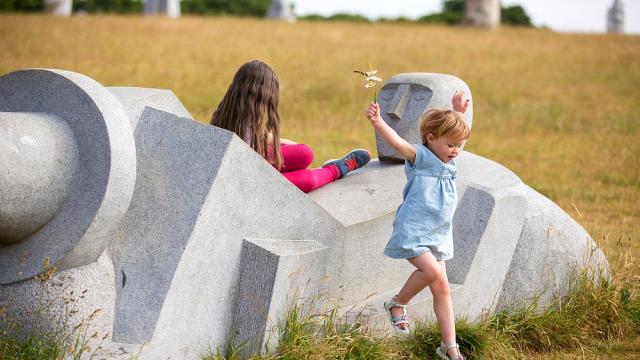 Cdb Aa1142 Derennes Yannick
Cdb Aa1142 Derennes Yannick Cdb Aa1126 Derennes Yannick
Cdb Aa1126 Derennes Yannick Cdb Aa1132 Derennes Yannick
Cdb Aa1132 Derennes Yannick